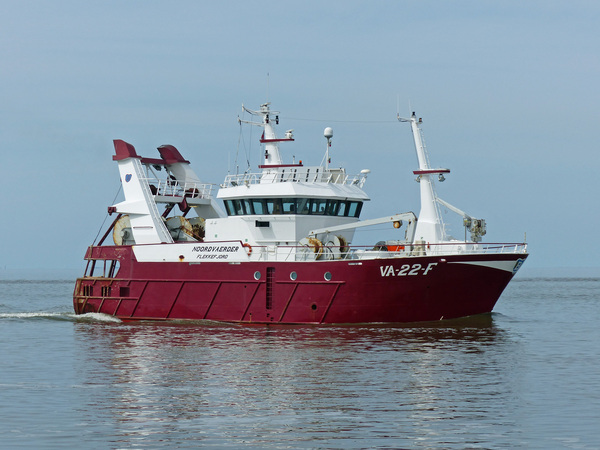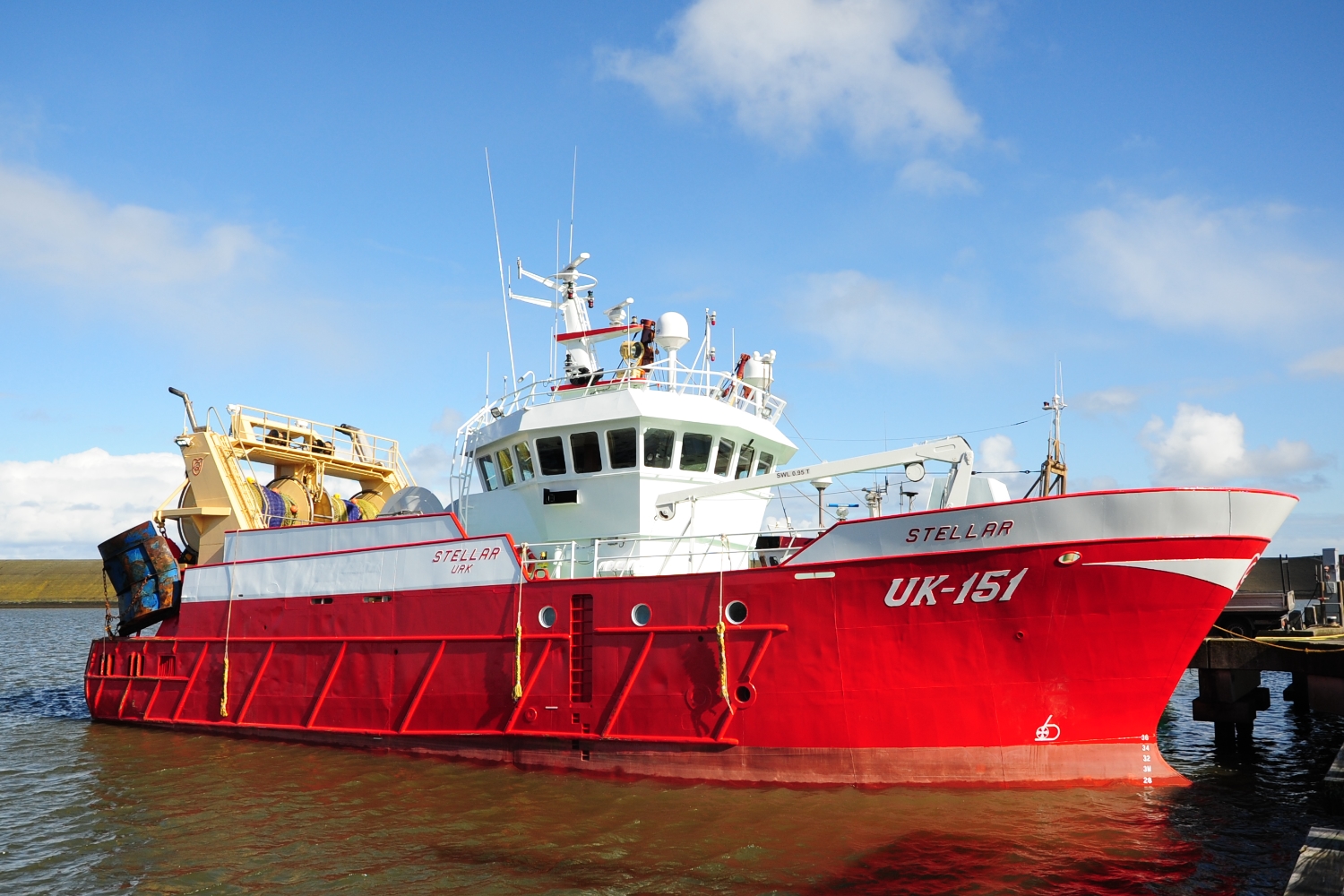Modern refit for a versatile twinrigger-flyshooter
With the extension and extensive modernization of the UK-151 Stellar, an existing vessel has been successfully prepared for the future. Originally built as the Norwegian VA22F, the vessel was acquired last year by the Quotter shipping company and reflagged to the Dutch fleet. The hull was extended by 3.60 metres at Nauta Shipyard in Poland, followed by further outfitting under the direction of Van Slooten Shipbuilding. Naval Consultant Herman Jansen was responsible for the design work and for updating the plans following major design changes. Last autumn, the vessel departed for her first voyage following the rebuild.
Technical upgrade and system integration
The extension to 31.67 metres created space for both an enlarged fish hold and the installation of a completely new flyshooting system. The Osey flyshoot winches, developed jointly by subsidiary Marble Automation and VCU TCD, were installed along with an advanced winch control system. This system is specifically designed for flyshooting but can also be used for twinrigging, offering digital control of tension, pressure, and rope length. Piet Brouwer Electrotechnology handled the control systems, De Boer Marine supplied the bridge equipment, and the hydraulics were installed by Couperus together with VCU. The fish processing systems were renewed, including an ice machine, modern refrigeration, and ergonomically adjustable working platforms for each crew member. A new net monitoring system was installed in collaboration with Simrad and WNL.

A flexible vessel for varied catches
Following the refit, the UK-151 is now highly adaptable, capable of switching between twinrigging and flyshooting depending on seasonal opportunities. During the winter season, the vessel will operate in the Channel. For skipper Egbert Korf — formerly head of the net department at VCU — this is familiar ground. He also prepared the vessel's gear for both modes of fishing. The extension not only increased operational efficiency but also improved working conditions and expanded the accommodation spaces. Despite delays caused by discussions regarding tonnage limits, the Stellar now stands as a prime example of how thoughtful design and effective collaboration can extend a vessel’s working life for many years to come.
 EN
EN  NL
NL 




